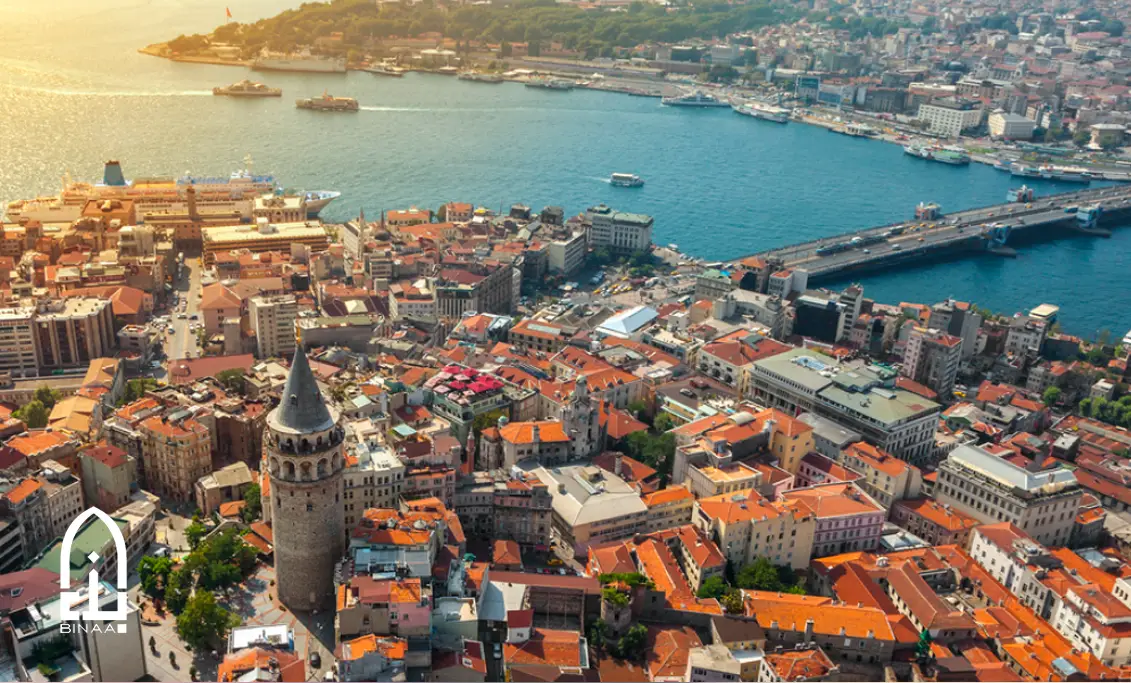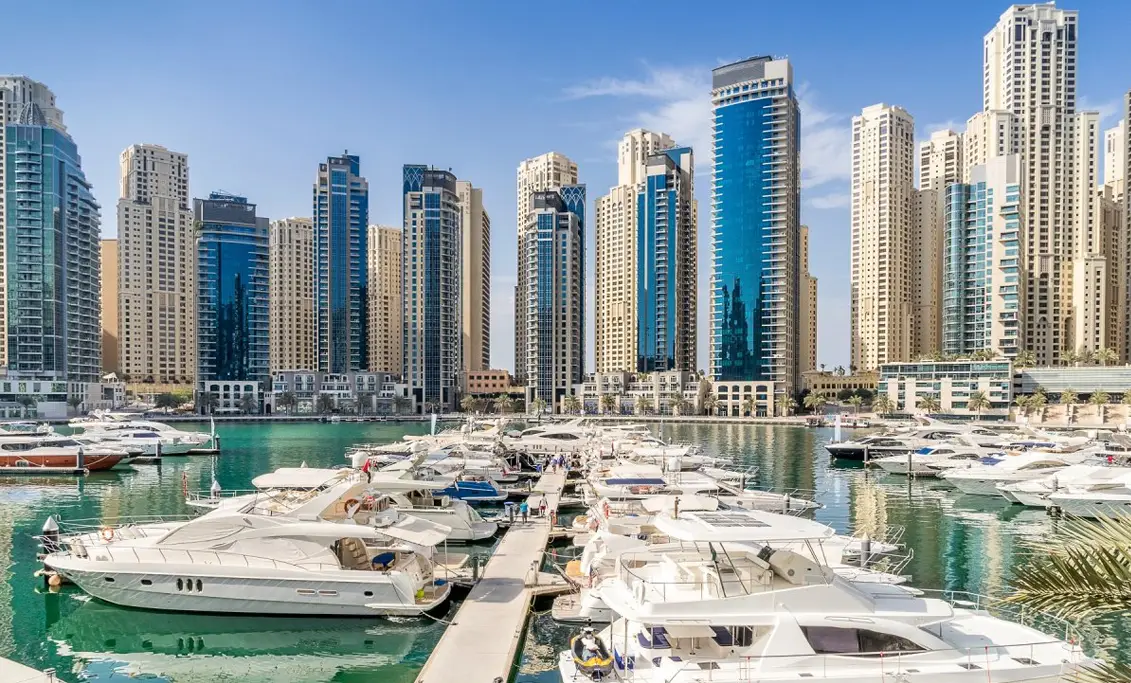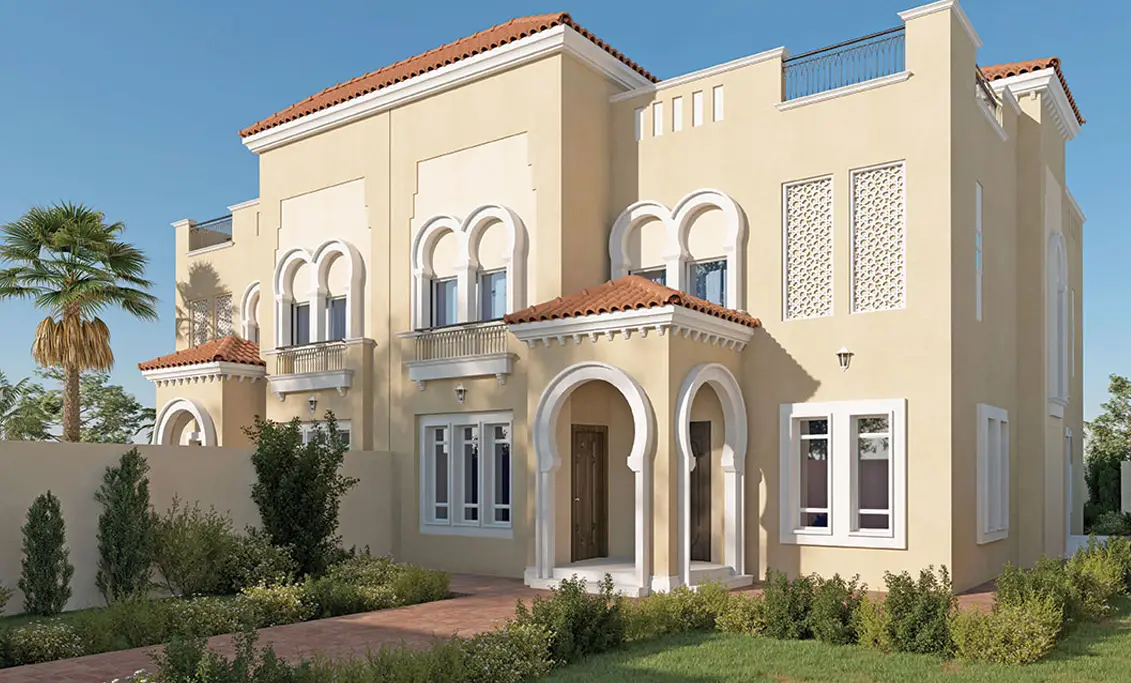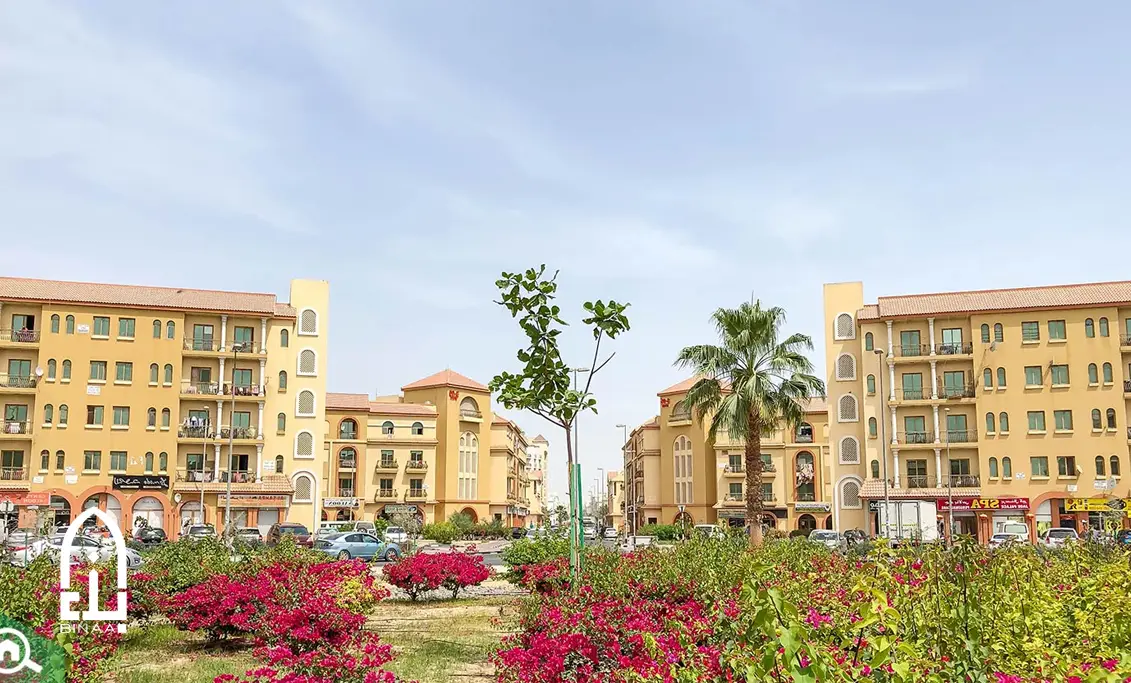The Golden Horn ( Haliç ) is one of the most prominent natural and historical landmarks in Istanbul. It is a long gulf that separates the historical peninsula, which contains the most famous landmarks of the old city, from modern districts such as Beyoğlu. And Kasim Pasha.
Throughout the ages, the Golden Horn has been a center of trade and seaports, a strategic location that contributed to Istanbul's prosperity as the capital of the Byzantine and Ottoman empires. Today, it has become a symbol of natural beauty and cultural diversity, attracting tourists with its sparkling river, historic bridges, and panoramic views.
Location and geography of the Golden Horn
The Golden Horn stretches approximately 7.5 kilometers within Istanbul, and its width ranges between 200 and 700 meters , making it one of the largest protected natural harbors in the world.
- From the southeast side, it starts at the Eminonu district near the Alata Bridge and opens onto the Bosphorus Strait.
- From the north and inland side, it connects to the Ali Beykoy rivers. And the two rivers that provide him with fresh water.
This unique location has historically made it a strategic commercial center and an ideal location for establishing ports and markets. To this day, it remains a meeting point between European Istanbul, with its ancient past and modern present.
The origin of the name Golden Horn
The name Golden Horn goes back to several historical accounts:
- Golden reflection of the sun : At sunset, the waters of the Gulf would reflect its rays, making them appear to shine with a dazzling golden color.
- Trade Wealth : For centuries, the Golden Horn was a center of global trade, where goods and wealth from the East and West were piled high, so much so that people likened its wealth to gold.
- Religious and Cultural Symbolism : For some historians, the name reflects the Gulf's status as a source of life and prosperity for the people of ancient Istanbul.
Today, the name still carries this symbolism, combining the natural beauty and historical richness that have distinguished Istanbul throughout the ages.
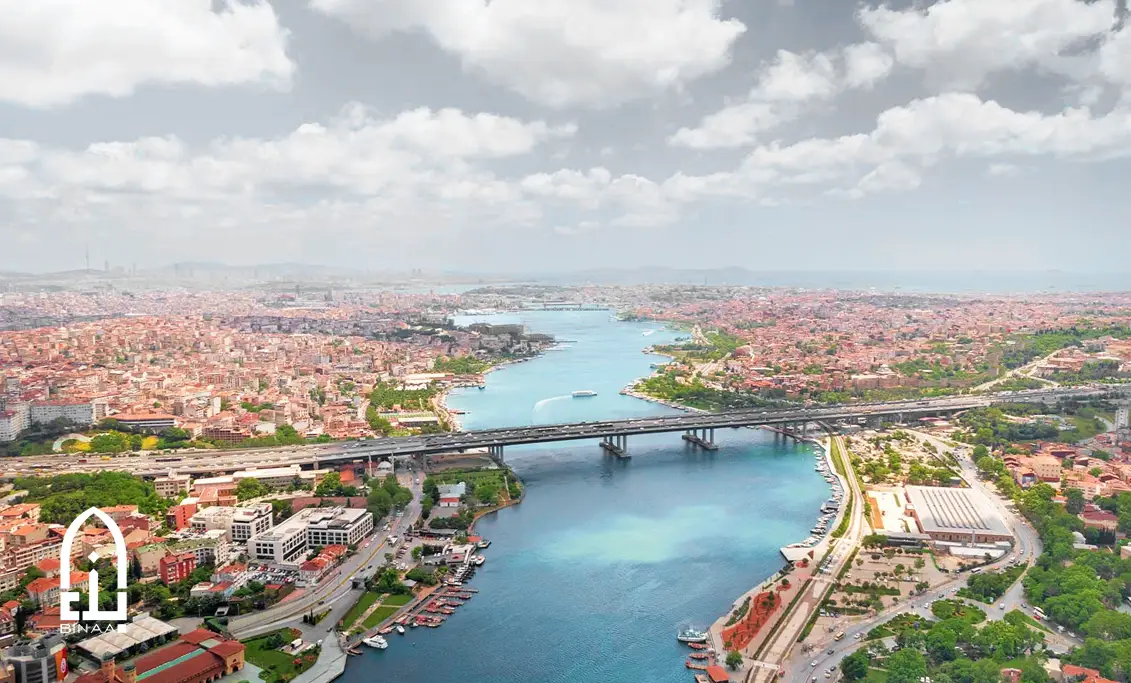
The historical significance of the Golden Horn
The Golden Horn has played a pivotal role in the history of Istanbul since ancient times:
- During the Byzantine era , the gulf served as Constantinople's first line of defense, with a massive iron chain placed at its sea entrance to prevent enemy ships from entering.
- During the Ottoman era , it became a center for seaports and commercial markets, and shipyards were built on its banks. It also housed important neighborhoods such as Eyup and Sultan Eyup, which gained significant religious significance.
- In the Middle Ages : It became a meeting place for merchants from Europe and Asia, strengthening Istanbul's position as a bridge between East and West.
Thanks to this status, the Golden Horn was not just a waterway, but the heart of economic and military life that contributed to the city's prosperity and transformation into one of the greatest capitals in history.
Bridges and landmarks on the Golden Horn
The Golden Horn is a major crossing point in Istanbul, with several bridges connecting its two banks and giving the city its unique character:
- Galata Bridge : One of the oldest and most famous bridges in Istanbul, it connects Eminonu Karakoy , and is distinguished by its views of the New Mosque and Galata Tower , in addition to the restaurants spread underneath it.
- Atatürk Bridge : Connects the Unkapanı neighborhoods. Kasımpaşa is widely used for car and tram traffic.
- Haliç Bridge ( Haliç Köprüsü ) : One of the longest bridges over the Golden Horn, it was opened in the 1990s to facilitate traffic on the Ring Road.
- Haliç Metro Bridge ( Haliç Metro Köprüsü ) : A modern bridge connecting Beyazıt and Şişli via the M2 metro line , it is considered a prominent architectural landmark.
There are also famous landmarks on the banks of the Gulf, such as:
- Eyüp Sultan Mosque : One of the holiest places for Muslims in Istanbul.
- Galata Tower : overlooking the Gulf and the Bosphorus Strait.
- Koc Industrial Museum , which displays the history of industry and transportation in Turkey.
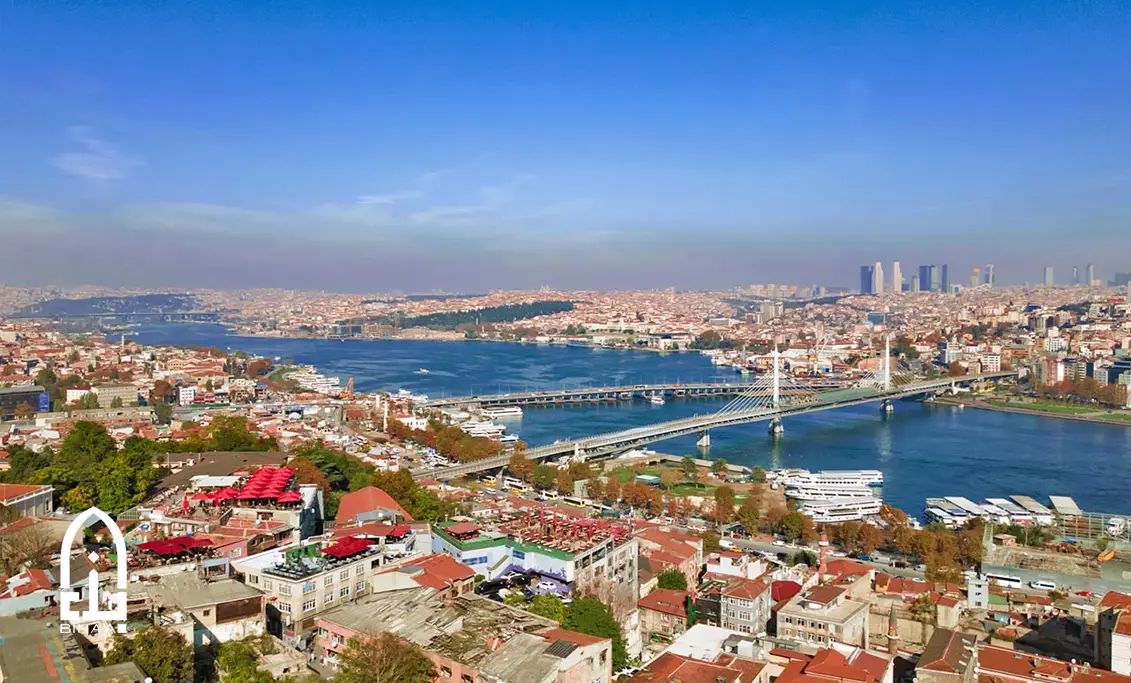
The strategic importance of the Golden Horn
The Golden Horn was not just a beautiful natural bay, but throughout the ages it was a crucial strategic element in Istanbul's position:
- A protected natural harbor : Thanks to its crescent-shaped shape and depth, the Golden Horn provided a safe haven for commercial and military vessels away from storms and the dangers of the sea.
- Natural Defense Line : During the Byzantine and Ottoman eras, the bay was used as a defensive barrier for the city, with its entrances closed with massive iron chains to prevent any naval attack.
- A global trading center : Its strategic location on maritime trade routes made it a major stop for traders coming from the Black Sea and heading to the Mediterranean.
- A link between continents : The gulf separates the city's historic banks in Fatih and Eminönü , and the modern banks in Beyoğlu , making it a geographical node linking East and West.
- Modern economic importance : Today, it is considered a magnet for tourism and real estate investments, with hotel and cultural projects being built along its banks, enhancing Istanbul's role as a global center.
Schools and universities surrounding the Golden Horn
Thanks to its central location in Istanbul, the Golden Horn is surrounded by a number of prominent educational institutions that have made the area a vibrant academic environment:
- Golden Horn University ( Halıç Üniversitesi ) : Located near the shores of the Gulf in the Şişli district , it offers various majors in medicine, engineering, arts, and social sciences.
- Istanbul University ( İstanbul University ) : One of the oldest Turkish universities, it has many faculties in the Fatih district overlooking the Golden Horn, such as the Faculty of Arts and Sciences.
- Kocaeli University ( Kadir Has Üniversitesi ) : Located directly on the banks of the Golden Horn in the Kasımpaşa district , its main building was converted from a historic tobacco factory into a modern university campus.
- International and private schools : Accredited Turkish and international schools are located in the neighborhoods of Eyup, Fatih, and Beyoğlu , offering Turkish and international curricula (such as the International Baccalaureate).
This academic presence has made the region a vital hub for local and international students, contributing to its cultural and social significance, along with its historical and touristic value.
Roads and transportation around the Golden Horn
Since the Golden Horn is located in the heart of European Istanbul, it is surrounded by an integrated network of roads, bridges, and public transportation, making it a major connection point between the city's neighborhoods:
- Bridges : The bay is crossed by four main bridges ( Galata , Ataturk, Halic , and Halic Metro Bridge ), facilitating traffic between the historical and modern banks.
- Highways : The D100 , one of the most important traffic arteries in Istanbul, passes by it , in addition to the internal roads that connect it to central districts such as Fatih and Beyoğlu .
- Metro : The area is served by the M2 metro line via the Halic Metro Bridge , which connects Yenikapı in the north to Hacıosman in the south.
- Tramway : Line T1 (from Bagcilar to Kabatas ) passes by Eminonu and provides direct access to the Golden Horn.
- Buses : Dozens of lines run through Eyup and Eminonu towards various areas of Istanbul.
- Sea ferries : Trips depart from Eminonu Port and Karakoy to other Golden Horn neighborhoods and to the Asian side of the city.
Thanks to this diverse network, access to the Golden Horn is easy and convenient for both residents and tourists.
The importance of real estate investment in the Golden Horn area
The Golden Horn is not only a historical and tourist landmark, but it has also become a promising area for real estate investment in Istanbul:
- Central location : Located between Fatih, Beyoglu and Eyup, these are among the most sought-after areas for housing and rent.
- Urban development projects : The Gulf coast is witnessing extensive modernization projects, including the restoration of historic buildings, the construction of modern hotels, and residential complexes overlooking the sea.
- High tourist demand : The area's proximity to tourist attractions (Eyup Sultan Mosque, Alata Tower , museums) makes it an ideal choice for hotel or apartment investments.
- High rental returns : Apartments overlooking the Golden Horn generate good returns thanks to the high demand from tourists and students.
- Foreign interest : Many foreign investors prefer to invest in this region due to its historical authenticity and strategic location.
For those wishing to enter this market with confidence, they can seek the assistance of specialized companies such as Binaa Investment, which provides comprehensive consultations and carefully considered real estate options in the Golden Horn area, tailored to suit residential or investment objectives.

